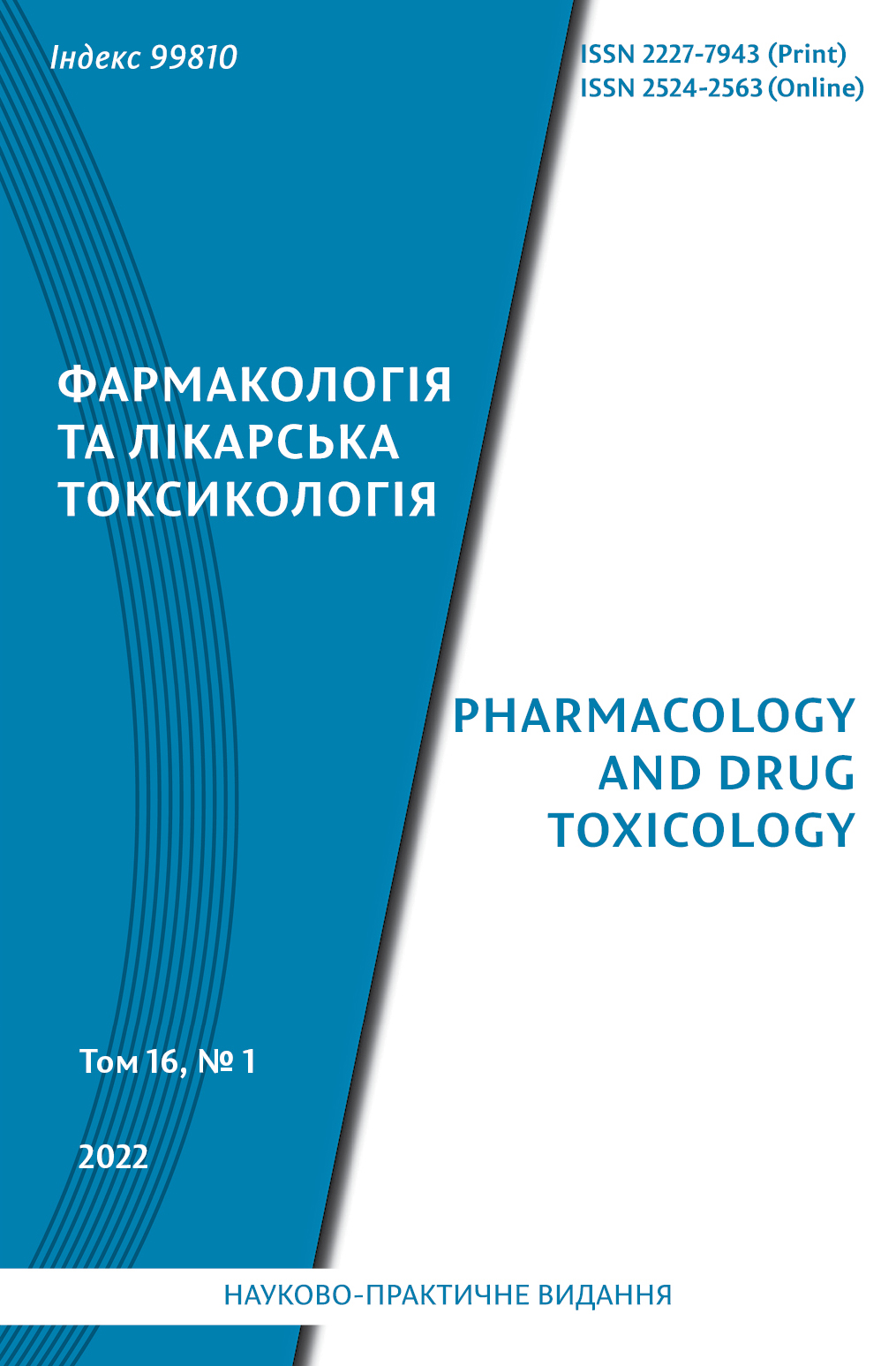Abstract
The aim of the study is to find out changes in the content of inhibitory (GABA, glycine) and excitatory (glutamate, aspartate) amino acids, as well as 8-isoprostane in the mouse brain under the model of convulsive syndrome and the influence of the original quinazoline derivative 2-(2,4-dioxo-1,4-dihydroquinazolin-3(2H)-yl)-N-[(2,4-dichlorophenyl)methyl]acetamide, which anticonvulsant, anxiolytic, and antidepressant properties has been shown in previous studies.
The experiments were performed on 24 non-linear albino mice under the model of thiosemicarbazideinduced seizures. The test compound at a dose of 100 mg/kg and the reference drug sodium valproate at a dose of 300 mg/kg were administered intragastrically 30 min before thiosemicarbazide (25 mg/kg intraperitoneally). On the peak of the first attack of clonic, clonic-tonic, or tonic seizures, the animals were decapitated, the brain was immediately removed and frozen with liquid nitrogen. In the brain homogenate, the content of GABA, aspartate, and glutamate was determined by high-voltage electrophoresis, the content of glycine was determined by thin-layer chromatography on Silufol plates, and the content of 8-isoprostane by enzyme immunoassay.
Thiosemicarbazide led to a significant decrease in the cerebral GABA content against the background of an elevatid glutamate level, a decrease in the content of glycine with an unchanged level of aspartate. 2-(2,4-Dioxo-1,4-dihydroquinazolin-3(2H)-yl)-N-[(2,4-dichlorophenyl)methyl]-acetamide provided a beneficial effect on the balance of inhibitory and excitatory amino acids in the brain, increasing the content of GABA (moderately) and glycine (very significantly), moderately reducing the level of glutamate and aspartate. According to the ability to normalize GABA and glutamate level, the studied compound was
somewhat inferior to sodium valproate, while it influenced no less effectively on the content of glycine and aspartate. In addition, 2-(2,4-dioxo-1,4-dihydroquinazolin-3(2H)-yl)-N-[(2,4-dichlorophenyl)methyl]-acetamide counteracted oxidative stress in the brain, significantly reducing the content of 8-isoprostane, which was increased under the influence of thiosemicarbazide. In terms of antioxidant properties, the test compound was somewhat inferior to the reference drug sodium valproate.
Therefore, the original quinazoline derivative 2-(2,4-dioxo-1,4-dihydroquinazolin-3(2H)-yl)-N-[(2,4-dichlorophenyl)methyl]-acetamide at a dose of 100 mg/kg intragastrically increases the reduced level of inhibitory amino acids and decreases the content of excitatory amino acids in the mouse brain on the peak
of thiosemicarbazide-induced seizures. The test compound inhibits oxidative stress judging by reducing the cerebral content of 8-isoprostane. These properties explain the mechanism of anticonvulsant action and substantiate the further studies of 2-(2,4-dioxo-1,4-dihydroquinazolin-3(2H)-yl)-N-[(2,4-dichlorophenyl)methyl]-acetamide as an anticonvulsant and a psychotropic drug.
